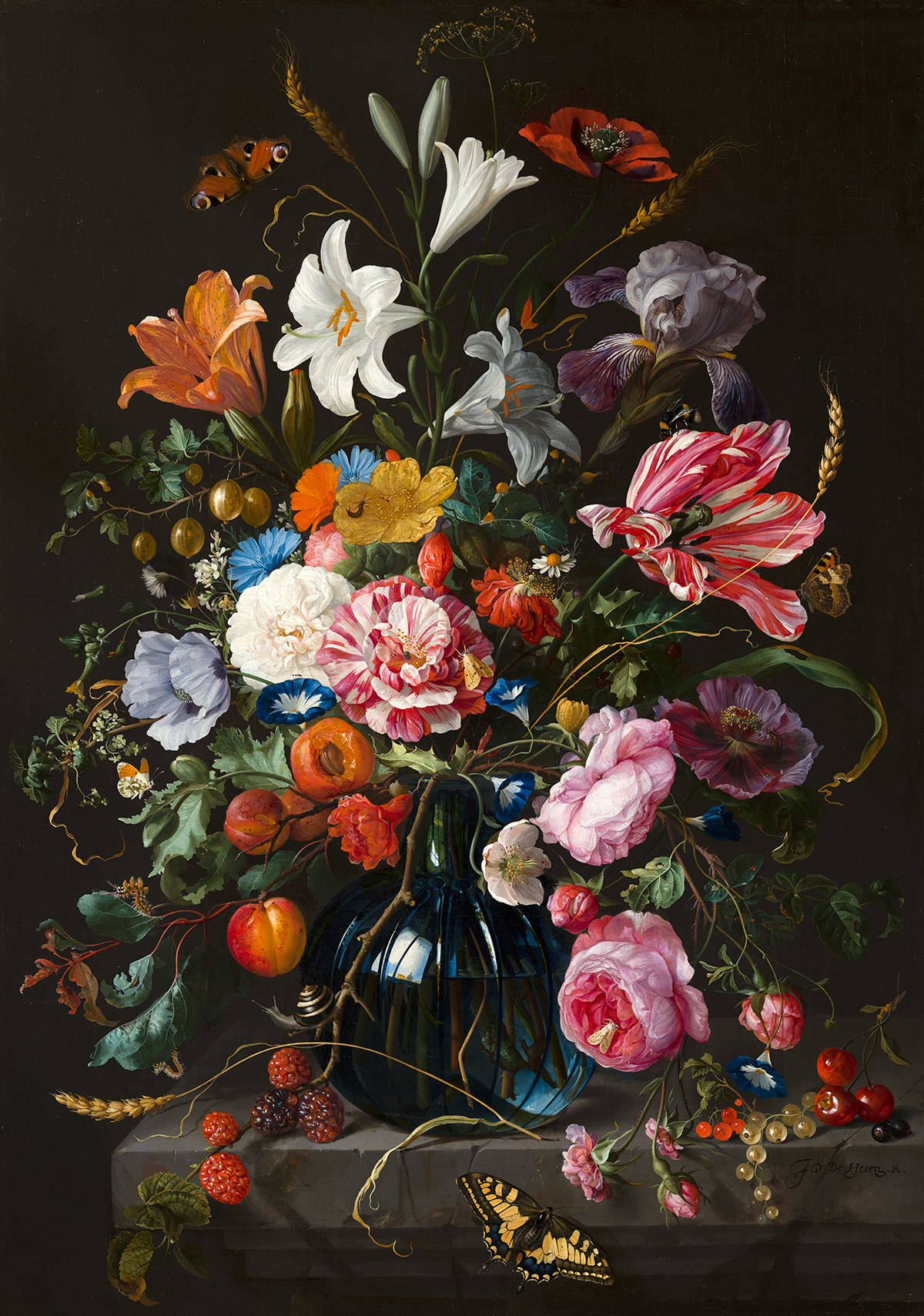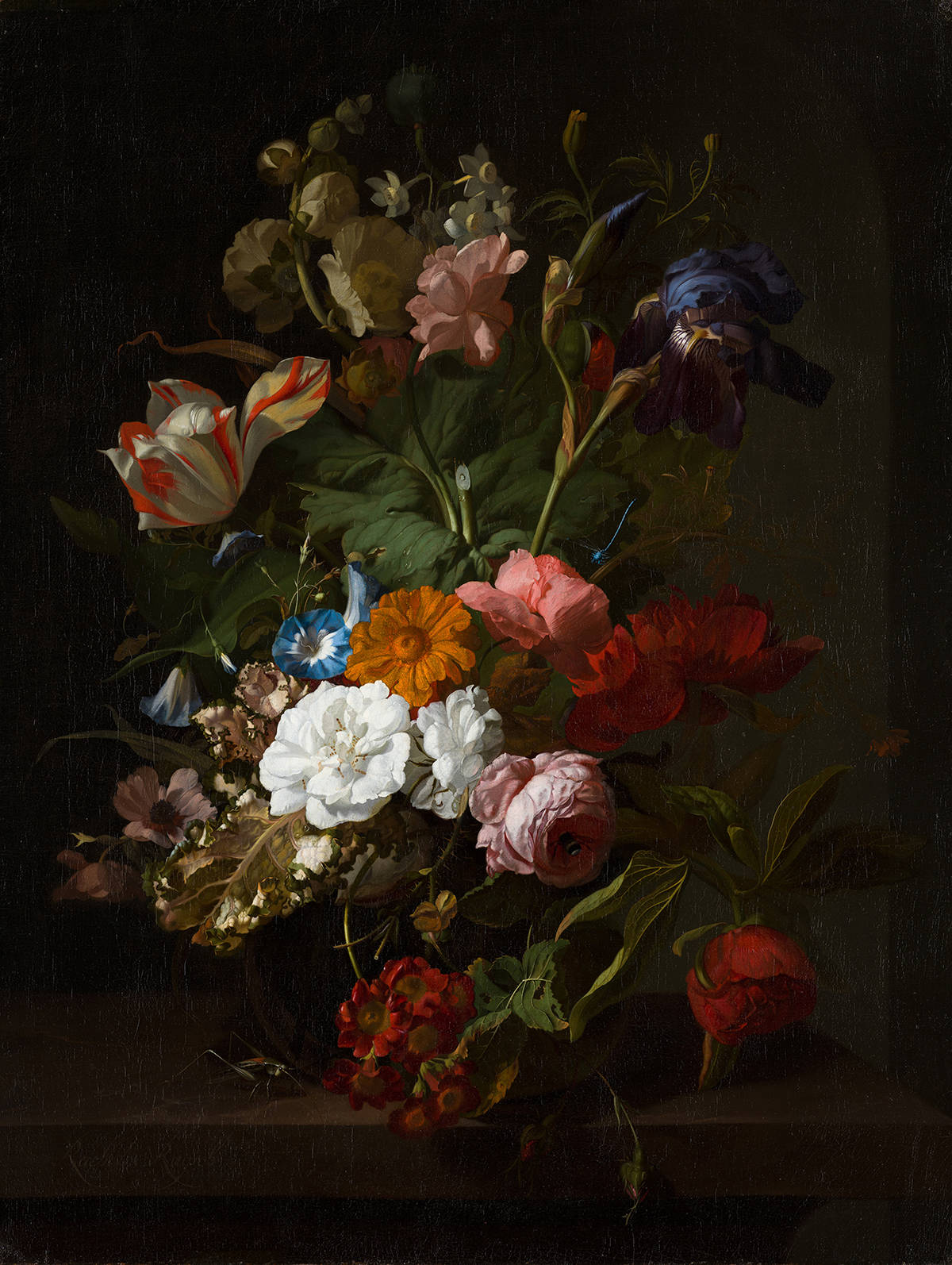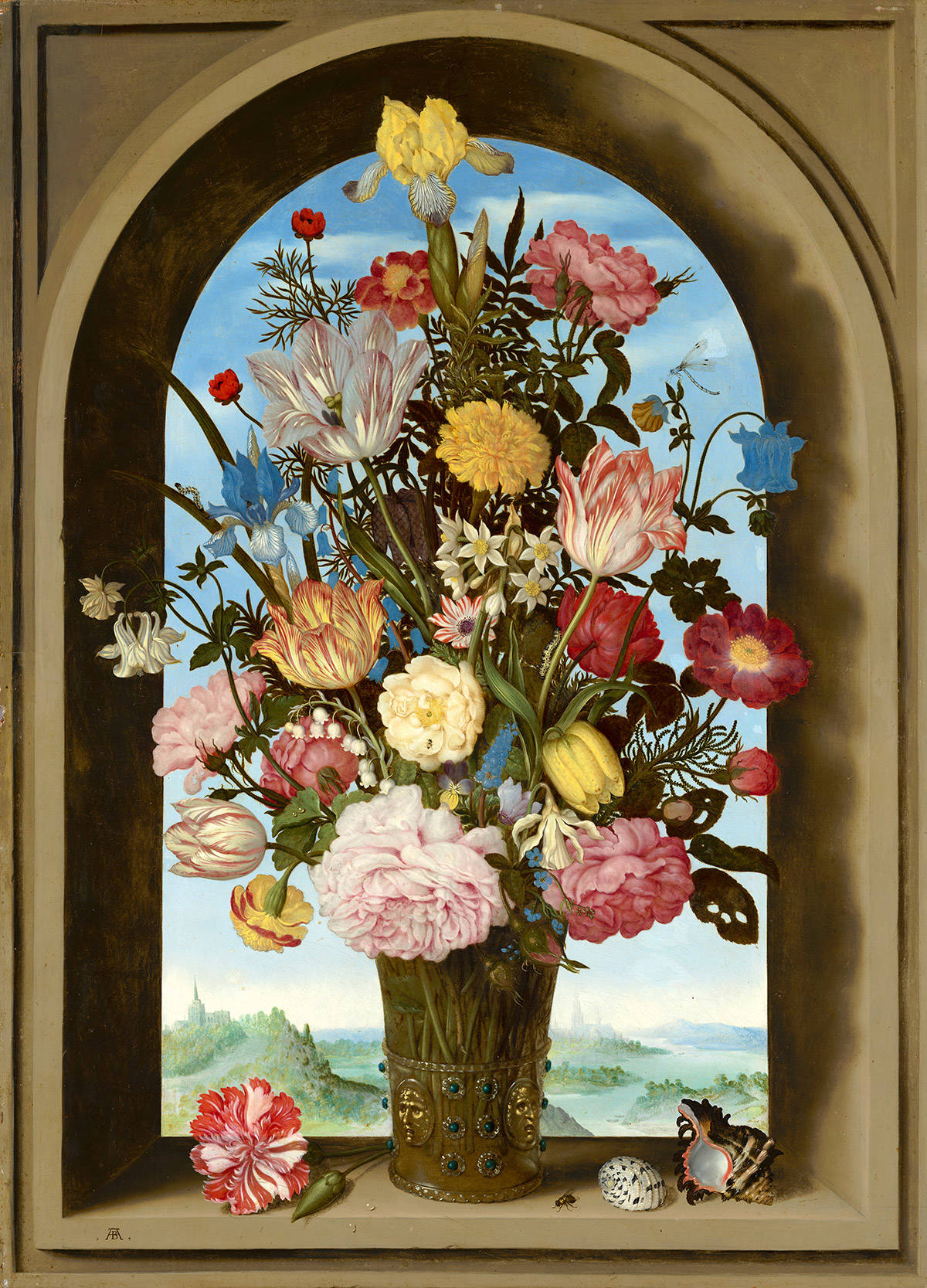The Mauritshuis presents an overview of the vibrant story of the 17th-century Dutch flower still life 1600-1730
Floral Fireworks in a Vase
05 Jan 2022

The Mauritshuis is treating its visitors to a vibrant bouquet in its bicentenary year, composed of the finest flower still lifes of the 17th century. The museum has its own extremely rich collection of flower paintings, masterpieces by Ambrosius Bosschaert, Roelant Savery, Jan Davidsz de Heem and Rachel Ruysch. These bouquets are among the most popular works in the collection, and with good reason. Supplemented with loans from around the world, the exhibition ‘In Full Bloom’ tells the fascinating story of the flower still life. In the space of just over a century, from c. 1600 until c. 1730, the genre underwent an extraordinary development, from ‘impossible’ imagined bouquets and daring constructions to sumptuous spectacle pieces. But the paintings were always exceedingly decorative, breathtakingly detailed and a feast of colour… with plenty of creepy-crawlies.
Long stem
The flower still life appeared ‘all at once’ as an independent painting genre around 1600, influenced by the growing interest that had arisen in the 16th century for collecting and researching exotic flowers and plants in particular. The botanical garden in Leiden, the Hortus Botanicus, was established in 1594 as the first in the Netherlands, and an increasing number of individuals were involved in the scientific study of flora and fauna. The first painter to exclusively focus on the flower still life was Ambrosius Bosschaert. Around 1618 he painted an enormous bouquet standing in a niche (Vase of Flowers in a Window). Every flower is meticulously painted from nature, but the 30 different flowers didn’t all bloom at the same time. The bouquet itself is also imagined: all the flowers are arranged at the front, which means that in reality the arrangement would have immediately toppled over. Moreover, the uppermost flower would have had to have an impossibly long stem to be able to rise up above the other blooms.
In Full Bloom is made possible with the support of the Friends of the Mauritshuis Foundation, Prins Bernhard Cultuurfonds, Fonds 21, Zabawas Foundation and the M.A.O.C. Gravin van Bylandt Foundation.
Sense of depth
In the period 1600-1630, most painters produced detailed imagined bouquets, in which each individual bloom received equal attention. The more varieties, and the rarer they were, the better. After 1630, this style changed: bouquets became less frontal and the arrangements less symmetric. It became increasingly important that bouquets looked as if they had been painted from life. In 1639, Hans Bollongier painted a ‘messier’ bouquet than his predecessors (Floral Still Life, Collection Rijksmuseum). Less frontal; less symmetric. The flowers at the back are not as brightly lit, creating a greater sense of depth. Towards the middle of the 17th century, huge economic growth meant that more people could afford a flower still life, and these paintings became more popular than ever. Flowers continued to be exclusive and highly sought after. In the 1630s, tulip bulbs were fought over, leading to colossal financial speculating and in turn to an equally great crisis. Some single tulip bulbs were commanding the same price as a Dutch canal house. In 1637, the trade collapsed spectacularly, leaving hundreds in financial ruin. This is reflected in the print Flora’s Wagon of Fools, which shows people walking along behind Flora’s wagon, directly into the sea.
Spectacle
In the second half of the 17th century, the flower still life was upgraded, resulting in ‘exploding’ bouquets. The tulip, columbine and fritillary were joined by more unusual blooms including the cabbage rose, guelder rose and opium poppy. Willem van Aelst (Flower Still Life with a Timepiece, 1663) and Jan Davidsz de Heem (Vase with Flowers, c. 1670) turned their flower still lifes into true spectacle pieces. Every detail had to be visually enticing: hidden flowers, creepy-crawlies everywhere, glittering light effects, lots and lots of colours and beautiful vases. The works of Abraham Mignon (Flowers in a Glass Vase and Flowers in a Metal Vase, both c.1670) also brim with this abundance. Around 1700, these floral fireworks in a vase subsided a little and painters returned to more subdued floral depictions. With Rachel Ruysch, one of the successful women artists in this genre, we encounter a more modest bouquet in 1700, one that remarkably has already started to wilt. Ruysch has even snipped off one of the flower heads. Flowers, and their short lifespan, could represent the fleeting nature of life itself.
Sustainable design
Tom Postma Design in Amsterdam is behind the design for In Full Bloom. The walls in the exhibition will be covered with an organic laminate, a sustainable and high-quality material made from waste products, including flower material from the bulb industry. One of the flowers used is the flamed Rembrandt tulip. The pigments extracted from the flowers give the walls their colour. The flowers are also pressed into the material so that the structure of the leaves, and sometimes the flowers themselves, remain recognisable. Once the exhibition has ended, the panels will be cut up and turned into pieces of furniture that will be available to buy. 95% of the materials used in the exhibition are sustainably produced.
In Full Bloom
10 February - June 6 2022
Download Image
Non-commercial use
All our images can be downloaded in high resolution from our website for non-commercial use (research/study, educational purposes, personal blogs and social media).
Would you like to use our images in a publication? Please mention our credit line: "Mauritshuis, The Hague."
Commercial use
Would you like to use our images for commercial purposes? We would be happy to discuss this with you. Please contact our marketing department at [email protected].
Download Image
Non-commercial use
All our images can be downloaded in high resolution from our website for non-commercial use (research/study, educational purposes, personal blogs and social media).
Would you like to use our images in a publication? Please mention our credit line: "Mauritshuis, The Hague."
Commercial use
Would you like to use our images for commercial purposes? We would be happy to discuss this with you. Please contact our marketing department at [email protected].
Download Image
Non-commercial use
All our images can be downloaded in high resolution from our website for non-commercial use (research/study, educational purposes, personal blogs and social media).
Would you like to use our images in a publication? Please mention our credit line: "Mauritshuis, The Hague."
Commercial use
Would you like to use our images for commercial purposes? We would be happy to discuss this with you. Please contact our marketing department at [email protected].
Download Image
Non-commercial use
All our images can be downloaded in high resolution from our website for non-commercial use (research/study, educational purposes, personal blogs and social media).
Would you like to use our images in a publication? Please mention our credit line: "Mauritshuis, The Hague."
Commercial use
Would you like to use our images for commercial purposes? We would be happy to discuss this with you. Please contact our marketing department at [email protected].
Download Image
Non-commercial use
All our images can be downloaded in high resolution from our website for non-commercial use (research/study, educational purposes, personal blogs and social media).
Would you like to use our images in a publication? Please mention our credit line: "Mauritshuis, The Hague."
Commercial use
Would you like to use our images for commercial purposes? We would be happy to discuss this with you. Please contact our marketing department at [email protected].





